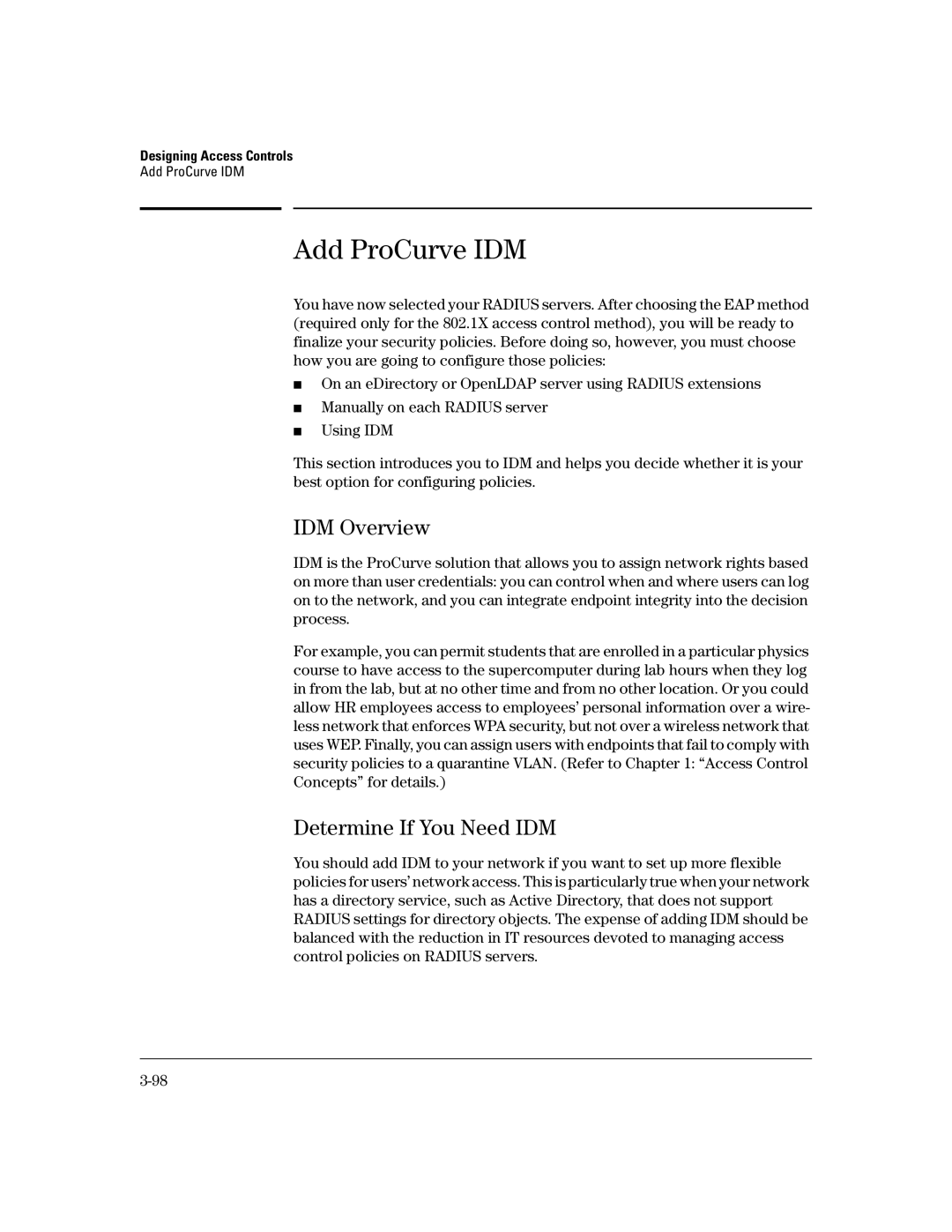
Designing Access Controls
Add ProCurve IDM
Add ProCurve IDM
You have now selected your RADIUS servers. After choosing the EAP method (required only for the 802.1X access control method), you will be ready to finalize your security policies. Before doing so, however, you must choose how you are going to configure those policies:
■On an eDirectory or OpenLDAP server using RADIUS extensions
■Manually on each RADIUS server
■Using IDM
This section introduces you to IDM and helps you decide whether it is your best option for configuring policies.
IDM Overview
IDM is the ProCurve solution that allows you to assign network rights based on more than user credentials: you can control when and where users can log on to the network, and you can integrate endpoint integrity into the decision process.
For example, you can permit students that are enrolled in a particular physics course to have access to the supercomputer during lab hours when they log in from the lab, but at no other time and from no other location. Or you could allow HR employees access to employees’ personal information over a wire- less network that enforces WPA security, but not over a wireless network that uses WEP. Finally, you can assign users with endpoints that fail to comply with security policies to a quarantine VLAN. (Refer to Chapter 1: “Access Control Concepts” for details.)
Determine If You Need IDM
You should add IDM to your network if you want to set up more flexible policies for users’ network access. This is particularly true when your network has a directory service, such as Active Directory, that does not support RADIUS settings for directory objects. The expense of adding IDM should be balanced with the reduction in IT resources devoted to managing access control policies on RADIUS servers.
